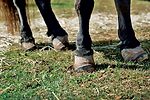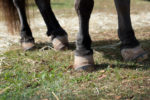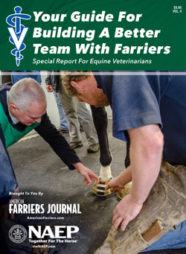Advertise Follow Us
Items Tagged with 'Equine metabolic syndrome'
ARTICLES
Hoof Nutrition Intelligence
Is there any new information you can share in regards to preventing or treating laminitis?
Read MoreHoof Nutrition Intelligence
Can high levels of fructans in the diet lead to laminitis concerns?
Read MoreHoof Nutrition Intelligence
How Do I Go About Planning the Proper Diet for My Laminitic Horse?
Read MorePreventing and Managing the Most Common Form of Laminitis
Strategies are improving to keep horses more comfortable and limit the progression of the deadly disease
Read More








